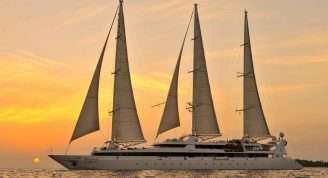Description
Magic forest and moonscape:
two famous national parks These two UNESCO World Natural Heritage Sites could hardly be more different: While the evergreen cloud forest Garajonay at the heart of La Gomera offers fascinating scenery made up of rivers, waterfalls and dense moss, Tenerife’s Las Cañadas del Teide national park is extremely dry. With tall lava tongues and bizarre rock formations, its volcanic landscape looks almost like the surface of the moon.
The rich cultural mix of Cape Verde
Not just geographically, Cape Verde is situated between Africa, the Caribbean and Europe. In the Portuguese colony that was a hub of the slave trade and exile for the religiously persecuted, since 1461 customs, musical traditions and genes amalgamated to the entirely new Creole culture. In 1975, the República Cabo Verde proudly declared its independence.
São Vicente – native island of Cesária Évora
Violin sounds mingle with African drums, Fado meets Polka and creates musical styles like Morna, Batuque and Funaná: The Cape Verde Islands are a melting pot of world music. Cesária Évora from lively Mindelo was the isles’ most famous singer. Barefoot and with a sweet melancholy, she sang of love, hurt and hope and is still revered today as the “Queen of Morna”.
Santo Antão, the island of contrast
The second largest island of Cape Verde enchants with its spectacular natural diversity. While the volcanic craters in the barren south are reminiscent of moonscapes, rocky mountainous landscapes alternate with green and fertile valleys in the north. Besides pineapples, mango trees and coconut palms, sugar cane is also grown here – and distilled into the national schnaps Grogue.















